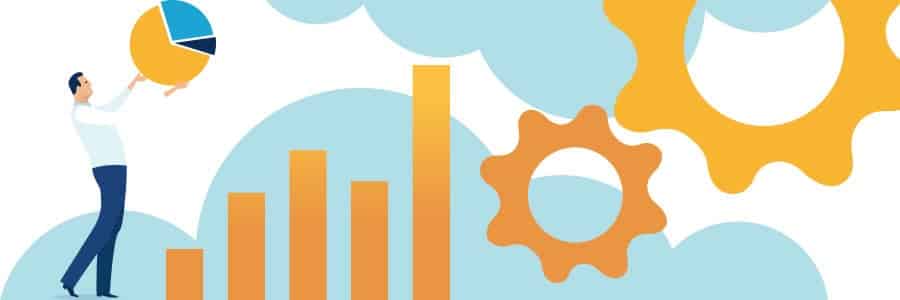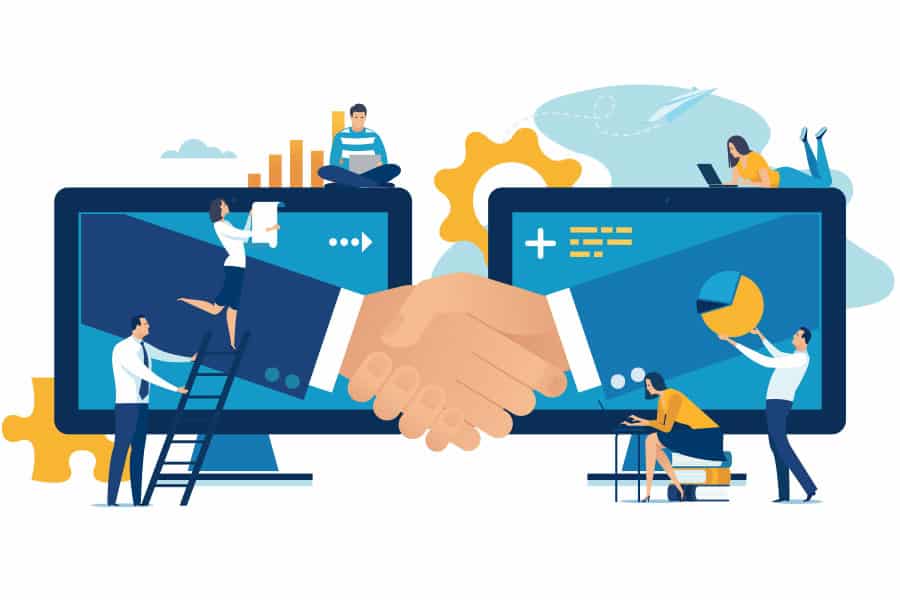As B2B content professionals, we pay close attention to shifts in the B2B landscape. We take note of how it’s changing – for our clients, their customers, their industries and our own industry.
Right now, with 2020 coming to a close, we can only be certain that the changes we see are fluid. And their molds may never set.
For instance, at the start of the Coronavirus outbreak in the U.S., companies shifted to “mission-based or cause-related marketing messages.” But now, B2B marketing experts suggest this type of messaging isn’t adequate or appropriate for today’s audience.
You do still need a B2B blog
Recently, we discussed how important it is for B2B companies to have active blogs, especially right now. We looked at the 2020 DemandGen report and a McKinsey survey of B2B buyers and learned that, this year, buyers are relying more heavily on content and self-service research.
But blogs are just one piece of the puzzle. And there may be better ways to blog for a changed B2B buyer.
So, I wanted to broaden the scope. With 2021 on the horizon, I was curious: Have B2B buyers really changed that drastically? What other factors are affecting the industry? How is it all shaking out? And most importantly, what should we do about it?
All signs point to more customer-centric B2B marketing

This is not a new concept. Most businesses aspire to be customer-centric, and they think they’ve been so all along. But in my research, nearly every article reflected this idea that B2B marketing needs to do it better.
The consensus seems to be that B2B companies need to think more B2C when it comes to marketing, a change that was already in the works before this year’s disruptions.
The Drift 2020 State of Conversational Marketing report asked B2B customers about their experiences. The survey found that “today’s online B2B experiences feel designed for anyone but the buyer.”
- 53% are frustrated by irrelevant ads and emails.
- 35% feel B2B services are impersonal.
And these numbers are actually worse than in the past. Frustrations with impersonal services have doubled. But that’s not necessarily because B2B companies aren’t trying. It’s more likely that B2B buyer expectations have changed, influenced by their personal experiences with B2C companies, societal issues, the Coronavirus, and countless other factors.
So, if B2B companies need to do better by their customers, what does that look like?
B2B marketing tips to take into 2021
Talk to your customers
We’ve said it before, and we’ll say it again: You have to talk to your customers. That’s the most valuable market research you can collect.
Your customer base has its own set of personas, job titles, pain points, expectations, etc. And with so much change this year, your customer base may have shifted more than you think. What worked for them in 2019 may not do anything for them today. You may even be on the verge of losing them.
What you learn listening to customers can directly influence planning across your business, not just in marketing.
Consider their new environments

Your customers have likely made significant changes, like going fully remote, spending on technology, reducing capacity at their facilities, implementing new safety measures, cutting budgets and suffering productivity losses. They’re also balancing the needs of their own customers, many of whom are in the B2C realm.
And your customers’ employees, like the buyer you were on the phone with this morning, are also juggling change. Their spouse may have been laid off, their children are home from school, their bills haven’t stopped, and their internet connection is spotty.
Experts are saying it’s a business-to-people world now more than ever. We must factor for the new environments our customers find themselves in – and we find ourselves in. And we must communicate to them on a truly human level.
Solve their problems
This is what it means to be truly customer centric. It’s taking that input from your customers, learning what their pain points are, and shifting your messaging and marketing to serve their actual needs. According to MarketingProfs, better B2B marketing today is helpful, creates connection to people, and even entertains.
- Do they need more videos and spec material for your products so they can make more confident buying decisions?
- Do they need advice on getting more out of a product they already have so they can cut costs?
- Can you help them understand whether their purchase qualifies for a tax credit?
You could integrate any one of these into your marketing, via a blog, email, product page, PDF, etc.
Some customer issues aren’t profitable to solve. But it shows that you care, you’re paying attention, and you value their business. This will build long-lasting customer relationships, loyalty and trust.
Stay in your lane
Problem-solving is effective only when it’s appropriate. As we mentioned, customer expectations have changed since the beginning of the pandemic. Your audience may not respond well if you lean too hard on mission-based marketing or are overly helpful in areas outside of your wheelhouse.
Basically, don’t try to be Oprah. There’s already an Oprah.
Check out this advice from our team on creating customer-driven content in the time of COVID-19.
Beware virtual event fatigue

Events and trade shows have taken a major hit during the Coronavirus pandemic. For many in the B2B industry, these have been difficult to supplement. But a lot of them have tried their best to recreate these experiences virtually.
As part of your marketing strategy going forward, the experts say you must ensure each event is valuable and meaningful. Memorable, even. They’re signaling virtual event fatigue among B2B audiences. So, don’t throw a virtual party that isn’t worth attending.
Make sure attendees will have experiences they can learn and grow from, and that they’ll “walk away” with a sense of accomplishment – and maybe even a virtual goodie bag.
Improve the digital B2B customer experience

B2B buyers are relying on contentmore as they make their purchasing decisions. You must make sure those buyers can find you (SEO), find the information they need (taxonomy, content), and continue along the B2B customer journey effortlessly if they are interested (calls to action).
According to a recent Adobe blog, part of this is offering beyond-basic materials to answer high-level questions and reflect your expertise to fill in the gaps created by social distancing.
Also, simplicity wins the day. Amid the volatility 2020 has brought, experts say today’s B2B buyer needs the process to be as easy as possible. Too many steps to request a quote, too many unanswered questions, too long of a response time and you’ve lost them.
As Adobe puts it, “ease and trust will outweigh price and inventory.” Ease comes from the simplicity of the digital experience, trust from integrating high-level expertise.
In a recent article for MDM, 3 Aspens Media President Lindsay Young wrote about planning for a successful website redesign. Check it out if you think your digital experience could use some work.
Here at 3 Aspens Media, we’re committed to helping our clients create content that connects with their customers today, as fluid as those customers may be. We help facilitate customer and market research so clients can better understand their audiences, meet needs as they change, and communicate their value to future customers. We help clients optimize their sites for search, develop content for every step of the customer journey, connect through social media, and switch gears if the moment calls for it. If you’d like to learn more, reach out at [email protected].



